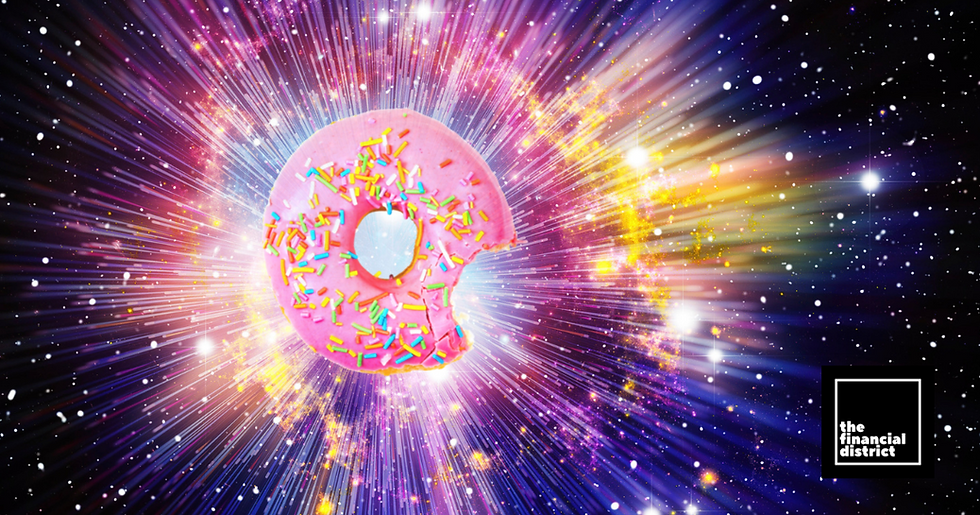The Universe Is A Giant Three-Dimensional Donut, Scientists Theorize
- By The Financial District

- Jul 22, 2021
- 2 min read
Imagine a universe where you could point a spaceship in one direction and eventually return to where you started. If our universe were a finite donut, then such movements would be possible and physicists could potentially measure its size, astrophysicist Paul Sutter reported for Live Science.

"We could say: Now we know the size of the universe," astrophysicist Thomas Buchert, of the University of Lyon, Astrophysical Research Center in France, told Live Science in an email. Examining light from the very early universe, Buchert and a team of astrophysicists have deduced that our cosmos may be multiply connected, meaning that space is closed in on itself in all three dimensions like a three-dimensional donut.
Such a universe would be finite, and according to their results, our entire cosmos might only be about three to four times larger than the limits of the observable universe, about 45 billion light-years away.
Multiple observations, especially from the cosmic microwave background or CMB (the flash of light released when our universe was only 380,000 years old), have firmly established that we live in a flat universe. Parallel lines stay parallel and our universe will just keep on expanding. But there's more to shape than geometry.
There's also topology, which is how shapes can change while maintaining the same geometric rules. While a perfectly flat universe would extend out to infinity, a flat universe with a multiply-connected topology would have finite size. A team of astrophysicists from Ulm University in Germany and the University of Lyon in France looked to the cosmic microwave background (CMB).
When the CMB was released, our universe was a million times smaller than it is today, and so if our universe is indeed multiply connected, then it was much more likely to wrap in on itself within the observable limits of the cosmos back then. Today, due to the expansion of the universe, it's much more likely that the wrapping occurs at a scale beyond the observable limits, and so the wrapping would be much harder to detect.
Observations of the CMB give us our best chance to see the imprints of a multiply connected universe. The team specifically looked at the perturbations — the fancy physics term for bumps and wiggles — in the temperature of the CMB. If one or more dimensions in our universe were to connect back with themselves, the perturbations couldn't be larger than the distance around those loops.
They simply wouldn't fit. As Buchert explained to Live Science in an email, "In an infinite space, the perturbations in the temperature of the CMB radiation exist on all scales. If, however, space is finite, then there are those wavelengths missing that are larger than the size of the space." In other words: There would be a maximum size to the perturbations, which could reveal the topology of the universe.





![TFD [LOGO] (10).png](https://static.wixstatic.com/media/bea252_c1775b2fb69c4411abe5f0d27e15b130~mv2.png/v1/crop/x_150,y_143,w_1221,h_1193/fill/w_179,h_176,al_c,q_85,usm_0.66_1.00_0.01,enc_avif,quality_auto/TFD%20%5BLOGO%5D%20(10).png)








